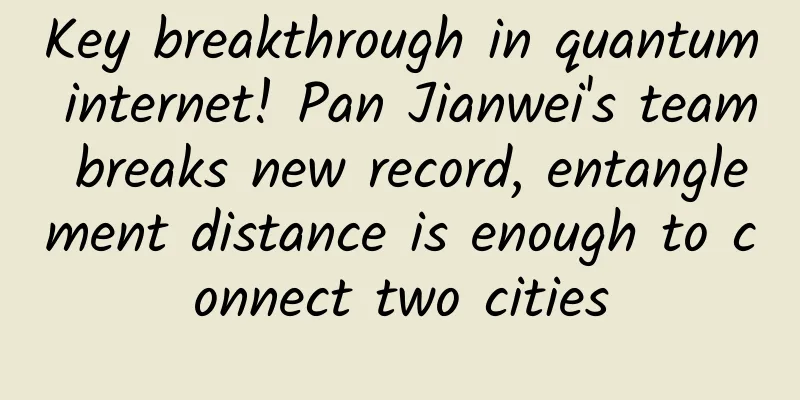The Internet of Identity is coming, and IAM will undergo a major change

|
What is the difference between the Internet of Identities and the Internet of Things? As the name implies, the Internet of Things is about things - devices, controllers, actuators, and so on. But these things will perform tasks, collect data, and connect to other devices. In other words, each device will have an identity with multiple attributes that must be well understood in order to drive good things to happen and prevent bad things from happening. Hence, the Internet of Identities. Today, as companies add tens of thousands of new devices to their internal and cloud-based networks, identity and access management (IAM) technology will also undergo a huge transformation. An enterprise's IAM infrastructure must be able to adapt to: 1. Large scale New IAM technologies will have to support millions of devices (and users), each with its own list of attributes. This is an N×N identity attribute matrix. Moreover, these users and devices may be temporary—appearing and disappearing as part of a business or execution process. Just auditing assets can be a time-consuming and labor-intensive task. 2. Privacy and security requirements Devices need to have hardened configurations, unique identities, multi-factor authentication, and secure communication between devices. This requires new policy engines and enforcement controls that are tightly integrated with existing network, cloud, and IAM infrastructure. 3. Continuous intelligent monitoring To maintain availability, performance, and security, the Internet of Identity requires constant monitoring. Given the rapidly growing scale, it can be said that humans alone cannot keep up with these activities. Therefore, the burden of keeping the Internet of Identity train running on time falls on the introduction of artificial intelligence and machine learning algorithms. The appropriate introduction of AI and machine learning can help automatically distinguish between normal behavior and abnormal activities and translate them into human-usable intelligence. Let's be honest: Microsoft may be a giant in the software industry, but its Active Directory (AD) is not enough to manage and maintain the Internet of Identities. As the Internet of Identity takes shape, several major shifts are likely to occur, such as: 1. Enterprises will centralize IAM management and procurement IAM has grown organically over the past few years and tends to be managed by a loose coupling of application developers, IT operations, and security personnel. As the Internet of Identity evolves, companies will realize that existing patchwork IAM deployments cannot address the scale of the Internet of Identity or drive new business processes. At that point, many companies will prioritize the next-generation identity infrastructure. Companies will also create the position of Chief Identity Officer - a senior person with the business and technical skills required to transform the company's identity infrastructure and shape the new IAM strategy. 2. Identity moves to the cloud The need for large-scale, continuous connectivity and processing power will drive large enterprises to embrace cloud-based IAM services. 3. Security is more important in IAM The survey shows that 66% of companies claim that their security teams' involvement in IAM policies, procedures and technologies has increased significantly or to some extent compared to two years ago. However, this is just the beginning. As the Internet of Identity becomes more established, CISOs will be closely involved in formulating and implementing identity strategies. The emphasis on data privacy will also increase significantly. The IT industry has been talking about identity-based computing and identity-based networking for several years, but it has been more of a vision than a reality. As the Internet of Identity evolves, the vision will eventually become a reality, ushering in a period of disruption, innovation, and transformation. When will it happen? We are on the highway entrance today, but the highway traffic is moving much faster than we think. In other words, the Internet of Identity and everything that comes with it is coming soon. |
<<: Choosing eMTC or NB-IoT should no longer be a problem
>>: As long as you are willing to find us to develop, you don't have to be exhausted.
Recommend
5G is not here yet, but it is within reach
5G is currently the most eye-catching new technol...
From the road to practice, Huawei is on the top of the storm
At present, all industries are accelerating into ...
DediPath Christmas promotion: 1Gbps unlimited traffic KVM from $15 per year, dedicated server from $39/month, multiple data centers in Los Angeles and other places
DediPath has launched a promotion for this Christ...
Why is it that few people are using 5G after two years of commercial use? In addition to signal problems, there are three other reasons
In 2019, my country built more than 130,000 5G ba...
Will SD-WAN replace SASE? Intelligent network services still depend on its
If we think about it, we will find that many of o...
ExtraVM: 1Gbps unlimited traffic VPS starting at $3.5 per month, AMD Ryzen series, multiple computer rooms available
ExtraVM is a foreign VPS service provider founded...
Summary information: Wuyou Cloud/Cool Cloud/Lanyun/Tiansheng Cloud/Candy Host/Cool Cloud
All merchants are actively carrying out Double El...
Flash is dead, and its first victim appears: the router can no longer log in
Flash was once the memory of a generation, but it...
What will happen to 5G base stations if power is cut off? Can operators handle the performance?
Power outages are happening all over the country,...
Understand how 5G base stations and 4G base stations work together in one article?
A few days ago, a netizen left a message asking h...
Experts: 6G will be available in 10 years and is expected to be 100 times faster than 5G
5G has not yet been fully rolled out, but 6G is a...
After reading this article, my grandma understands the principle of HTTPS
Anyone who has surfed the Internet knows that the...
In the post-“number portability” era, where will users and operators go?
"Are you planning to transfer your number to...
Satellite Internet or 5G, which is cheaper?
Just as a manned spacecraft was sent into space, ...
Entering the Third-Party Certification of IPv6 Technology
IPv6 certification assesses products, networks an...









